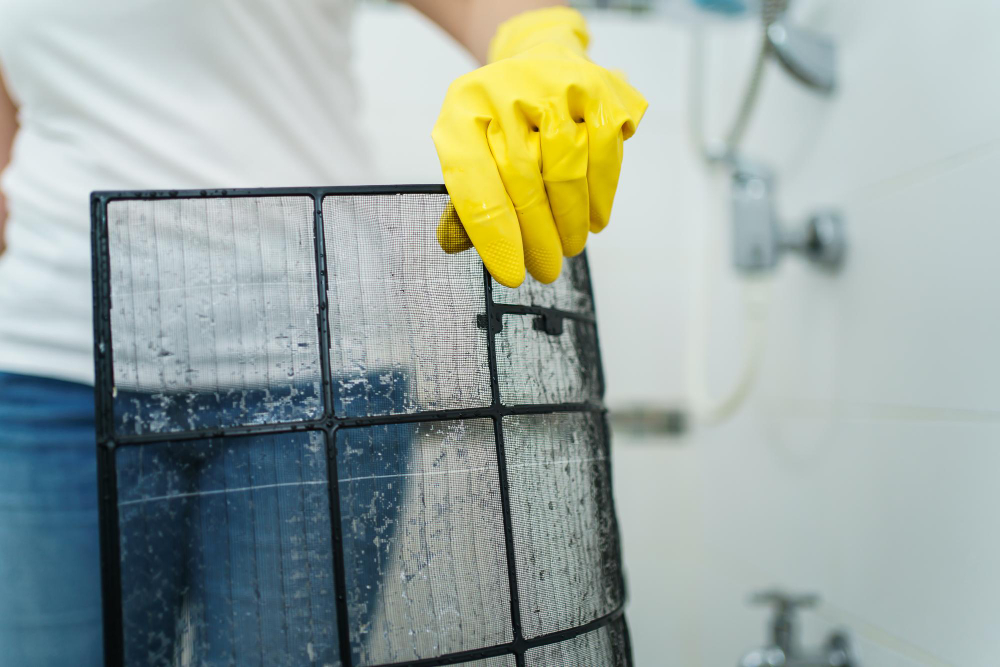Deep House Cleaning Tips That Will Keep Your Home Spotless

When most of us think about keeping our homes clean, we usually envision a quick wipe-down of surfaces like countertops and tables. But there are many other places in your home that need to be cleaned more regularly than you might think.
In fact, these often overlooked areas can make all the difference between a house that sparkles and one that’s just okay.
Tips For A Deep House Cleaning Routine
Deep cleaning your home is essential to keep it in good condition, especially if you have a busy lifestyle. If you don’t want to spend every weekend scrubbing your house, here are some tips for a deep cleaning routine that you can use as often as needed.
Clean the baseboards.
Cleaning the baseboards is one of those chores that you may not have thought about in a while, but it’s essential for keeping your home clean. Using a vacuum attachment to get into those tight corners can help, but there’s also another way to do it: just wipe them down with a damp cloth. Just make sure that you don’t use a spray cleaner or a glass cleaner, as these will leave residue on your baseboards and make them look dingy again. If you don’t want to spend time with wet cloths and paper towels every few weeks or months, invest in a microfiber cloth specifically for cleaning hard surfaces such as wood floors and walls.
If you have trouble getting into those smaller grooves between tiles or along the edges of cabinets, try using a brush or toothbrush instead of the standard broom or dustpan method.
Wash the walls.
Washing your walls can be a breeze with some simple steps. First, use a damp microfiber cloth or sponge to wipe down any dust on the walls. Then, mix up a small amount of mild detergent with water and use that solution to cleanse the walls. Don’t forget to rinse thoroughly once you’re done. You don’t want soap residue left behind in your home because it will attract dirt and grime as well as prevent paint from adhering properly later on. You can also use an organic cleaning solution.
Wet wipes are another option for cleaning walls; however, be sure to choose ones without harsh chemicals like alcohol or ammonia, such as a glass cleaner, that could damage paint finishes over time (this goes for any type of stain-removing product).
Clean the light bulbs and light fixtures.
Light bulbs and light fixtures can get dirty over time, but you don’t need to use harsh chemicals to clean them. Instead, just grab a damp cloth or paper towel and wipe down the parts of the fixture that you can reach easily. Be careful and make sure to switch off the bulb before using damp or wet cleaning supplies.
A little bit of water can go a long way in making sure your lights are shining bright once again.
Deep clean your carpets.
Prepare a cleaning schedule for your carpets as well.

Use a carpet cleaner that is safe for your carpet.
A good rule of thumb is to avoid any product that contains bleach or other harsh chemicals and opt for a more natural-based option instead like baking soda. You can find these types of cleaners at most supermarkets, and they are usually pretty affordable.
Use a carpet cleaner that is safe for your family.
It’s important to get the whole family on board when it comes to keeping their home clean and tidy since they will be using any products you use in the house as well. Make sure everyone knows how to use the products properly and cleaning tools—including sprinkling them over stains rather than pouring or spraying them directly onto an area—and always follow instructions carefully.
Use a carpet cleaner that’s safe for pets.
If you have pets, opt for pet-friendly cleaners. If any sort of chemical goes down your drains, chances are it could end up in our water supply sooner than later. Be mindful about what goes into your drains so you don’t poison both man and animals.
Unclog your drains.
If you have a clogged drain either in the kitchen or bathroom, the best way to get rid of it is by using a plunger. Put an old towel over the drain and then place the plunger overtop of it so that you can use both hands to push down on them at once. When you feel like your lungs are about to burst, stop pushing for a second and then repeat until water comes out. Avoid letting dirty dishes pile up on your kitchen sink.
If that doesn’t work, try using a chemical cleaner instead of plunging. These chemicals will dissolve hair and other debris stuck in your pipes so they can be washed away when you run water through them later on—which also means they won’t clog up again. You may need to use several bottles if there’s been years’ worth of buildup inside those pipes though.
Make your oven sparkle.
If you have an oven, chances are that it’s starting to look a little less than pristine. If your oven has a glass door, use the dishwashing liquid and warm water technique. If not, it may be harder to see what kind of gunk is caked on there—but don’t worry: if there’s grease or dirt in your oven’s nooks and crannies, it’ll all come out once you start cleaning with vinegar.
To do this:
Use 1/2 cup white vinegar mixed with enough water to make a paste; then spread over the inside of your oven with a sponge or microfiber cloths. The vinegar will cut through any grime left behind by burnt-on cheese or whatever else was cooked up for dinner last night.
After letting this sit for 10 minutes or so (you can even let it stay overnight), wipe clean any remaining pieces and rinse thoroughly with warm water until all traces are gone so they don’t leave stains and make the surfaces clean.
Wipe down your ceiling fans with a microfiber cloth.
Use a damp cloth to wipe down the blades, which can get dirty and clogged with dust. If you have a ceiling fan without lights, use a dusting spray to clean it thoroughly but make sure it’s safe for use on plastic.
The small holes in the blade of your ceiling fan will trap dirt and grime that no amount of wiping can remove. Cleaning out these little openings will allow more airflow, which means better circulation throughout your home—and less energy usage.
Use an old toothbrush to gently scrub away any stubborn dirt from between each blade. This method is best for those who prefer manual labor over chemicals or machines—but if you find yourself short on time or patience, just skip this step entirely.

Clean the fridge coils.
When it comes to keeping your refrigerator clean, you may think that the only thing on your mind is emptying out all of the food inside and replacing it with new items. But there’s one place in your fridge that can be just as important as what’s inside: coils.
To clean your refrigerator’s coils, first, turn off power at the circuit breaker or fuse box and unplug from the outlet before moving or removing any parts. Next, remove any removable parts to expose coils underneath. If you cannot remove them safely on your own, contact a professional for help with this step.
Once exposed, rinse each coil under running water until all dirt buildup has been removed. Cleaning them often will prevent them from becoming coated in hard-to-remove grime in future months/years of use and save yourself some time down the road.
Scrub down the inside of cabinets and pantries.
Cleaning the inside of cabinets and pantries is an easy task that can be completed in less than 30 minutes. If you don’t regularly clean these areas, you may find mold or mildew forming around the edges of drawers and shelves.
You’ll want to use dish soap with bleach for this type of cleaning—and if you have pets or children in your home, make sure it’s a type that is safe for them.
Using a sponge and rag, apply some soap to the surface and then wipe down the area with hot water. Use a toothbrush to get into corners; rinse off any residue with more hot water before drying with another damp rag
Sweep under appliances.
It’s the little things that often go overlooked and make a house look messy. The dust bunnies in the corner, for example, or those cookie crumbs and other food particles you dropped on the floor and didn’t clean up right away.
To make sure your home stays sparkling and fresh-smelling, get down on your hands and knees and give these problem areas a thorough cleaning once in a while. This means sweeping under fridges, washing down stoves, vacuuming behind TVs—or even just using a feather duster to spruce up those hard-to-reach spots.
For a clean house, one must be more involved than you might realize.
Deep cleaning is important, but it can be hard to know where to start. There are a few cleaning jobs that are more involved than you might realize and there are some that aren’t worth the effort. It’s important to pick your battles when deep cleaning so you don’t spread yourself too thin while still doing as much as possible.
Your home is a reflection of who you are, and keeping it clean can be one of the most rewarding things you do as a homeowner. Whether it’s an annual spring cleaning or weekly maintenance, there’s always something to do when it comes to deep cleaning your house.
The tips in this article will help you get started on the right foot with any type of deep cleaning project.
Take the time to prepare yourself mentally before starting any kind of deep cleaning project. It doesn’t matter what your motivation is or if there are specific times that work better for you than others; just take some quiet moments alone before tackling anything in order to mentally prepare yourself for what’s about to come next.




